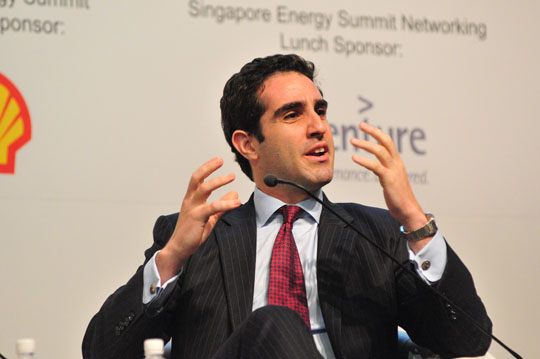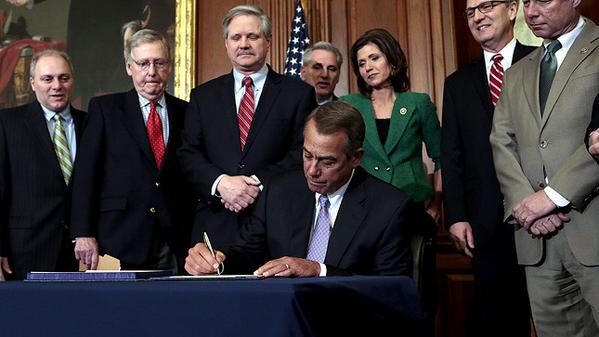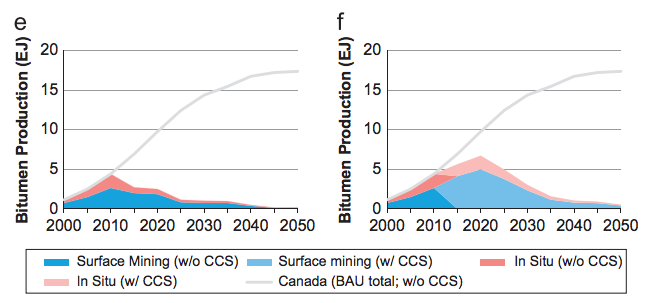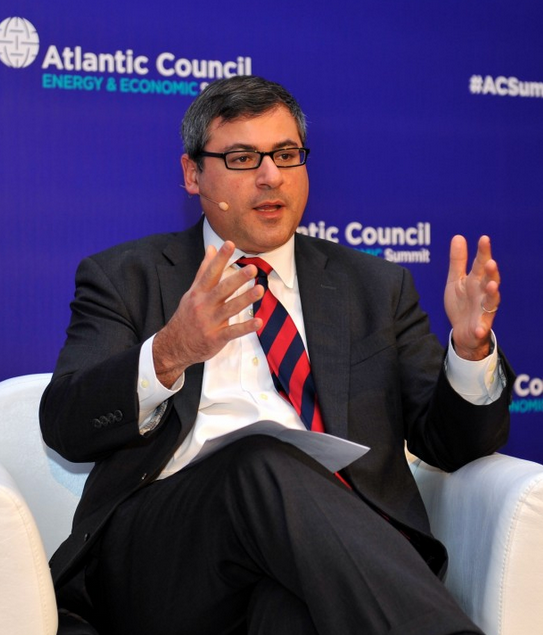Fossil-Fuel Industry Apologist Michael Levi Becomes Top White House Energy Advisor
 Michael Levi, a prominent apologist for the Keystone XL pipeline, natural-gas exports, and other fossil-fuel industry priorities, has joined the White House, Hill Heat has learned. Yesterday, Levi began work as a Special Assistant to the President for Energy and Economic Policy on the National Economic Council staff.
Michael Levi, a prominent apologist for the Keystone XL pipeline, natural-gas exports, and other fossil-fuel industry priorities, has joined the White House, Hill Heat has learned. Yesterday, Levi began work as a Special Assistant to the President for Energy and Economic Policy on the National Economic Council staff.
For ten years, Levi was Council on Foreign Relations senior fellow for energy and climate policy. Previously, Levi was a nuclear non-proliferation expert at the Brookings Institution, while pursuing his doctorate at the University of London.
Possessed of undeniable brilliance, Levi has no formal training in climate science, economics, or energy policy; his undergraduate and master’s degrees are in physics, and his doctorate is in War Studies. In 2008 he began publishing on climate policy, overseeing a major CFR Task Force report on U.S. climate policy chaired by Tom Vilsack and George Pataki. He quickly established himself as a prominent (and convenient) climate centrist-cum-contrarian—embracing the urgency of climate action, while criticizing other proponents of strong climate policy and providing convoluted arguments for the continued expansion of fossil-fuel and nuclear projects. (Levi calls his approach a most-of the above policy.) Over the years, his pursuits included taking a skeptical view of green jobs, promoting tar sands exploitation, and defending natural gas as a bridge fuel.
Levi’s position as CFR’s energy and climate expert was endowed by David Rubenstein, the founder of the Carlyle Group, a major investor in the oil and gas industry.
Levi is part of a generation of industry-friendly climate experts whose influence is on the rise with the ascension of Hillary Clinton’s campaign, whose numbers also include Heather Zichal (BA, Rutgers), the Rhodium Group’s Trevor Houser (BA, City College of New York) and Columbia University’s Jason Bordoff (Harvard Law). These people are pundits whose careers as climate experts have been sponsored by fossil-fuel industry investors despite a lack of training in climate science. They are now in position to shape United States climate policy if Clinton succeeds President Obama in November.
A Brief List of Keystone XL Supporters
After a protracted political battle pitting the climate movement against the power players of Washington DC, TransCanada’s proposed Keystone XL tar-sands pipeline has been rejected by President Obama and Secretary of State John Kerry.
Below is a brief and far from exhaustive list of political insiders who supported the Keystone XL tar-sands pipeline or predicted its approval at some point between 2011 and today:
- President Barack Obama
- Former Secretary of State Hillary Clinton
- Former president Bill Clinton
- Former president George W. Bush
- Former Obama chief economic advisor Austan Goolsbee
- Former senator Joe Lieberman
- Former senator Jeff Bingaman
- Former CNN reporter Steve Hargreaves President’s Council on Jobs and Competitiveness
- Former Speaker of the House Newt Gingrich
- Former Republican presidential nominee Mitt Romney
- American Legislative Exchange Council
- Rep. Fred Upton
- Washington Post editorial page editor Fred Hiatt
- Council on Foreign Relations fellow Michael Levi
- Harvard environmental economist Robert Stavins
- Former Montana governor Brian Schweitzer
- All corporate media
Actual climate scientists were near-unanimous in their opposition to the Keystone XL pipeline, based on a serious analysis of the pipeline’s potential climate impact. Ralph Keeling, James Hanson, Ken Caldeira, Peter Gleick, James McCarthy, Michael Oppenheimer, Michael Mann, Steve Running, Richard Somerville, Jason Box, George Woodwell, and many others supported calls for civil disobedience against the pipeline. Hansen and Jason Box were themselves arrested.
Hillary Clinton Announces Opposition to Keystone XL Tar-Sands Pipeline
Speaking at a town-hall event in Iowa, Democratic presidential candidate Hillary Clinton announced her opposition to the approval of the Keystone XL tar-sands pipeline.
“I oppose it because I don’t think it’s in the best interest of what we need to do to combat climate change,” Clinton told the crowd.
This marks a dramatic turnaround for the Democratic frontrunner.
During Clinton’s tenure as Secretary of State, her department recommended the pipeline be approved. Clinton let contractors for the pipeline’s owner, the Candian company TransCanada, control the approval process. A single State Department staffer assigned in the Bush administration to oversee the contractors remained in that position until October 2010. Public hearings on the State Department’s draft approval for the pipeline were run by a TransCanada contractor. As public outcry against the pipeline grew, TransCanada hired former staffers for Hillary Clinton to lobby on its behalf.
In March 2012, her husband and former president Bill Clinton announced his support of the pipeline’s construction, saying, “I think we should embrace it.”
Later that month, President Obama fast-tracked the southern leg of the Keystone XL pipeline, celebrating his administration’s record of “drilling all over the place.”
From reporter Samantha-Jo Roth:.@HillaryClinton – “I oppose Keystone XL pipeline” #IAcaucus
Republicans Send Keystone XL Bill to President after Ceremonial Signing
 Turning the process of enrolling a bill into stagecraft, Congressional Republicans ceremoniously signed their bill expediting the foreign-owned Keystone XL tar sands pipeline today. President Barack Obama has promised a veto of the legislation. The Hoeven-Manchin bill, S. 1, passed the Senate 62-36 and the House 270-152, neither achieving the two-thirds majority necessary for a veto override.
Turning the process of enrolling a bill into stagecraft, Congressional Republicans ceremoniously signed their bill expediting the foreign-owned Keystone XL tar sands pipeline today. President Barack Obama has promised a veto of the legislation. The Hoeven-Manchin bill, S. 1, passed the Senate 62-36 and the House 270-152, neither achieving the two-thirds majority necessary for a veto override.
Emulating the ceremony of a presidential bill signing, Senate majority leader Mitch McConnell (R-Ky.) and Speaker of the House John Boehner (R-Ohio) signed the enrolled legislation with large metal pens on a table decked with navy blue as other Congressional Republicans stood watching. Sen. John Hoeven (R-N.D.), who received the ceremonial pen, argued that vetoing the bill would help OPEC. According to the Hill’s Laura Baron-Lopez, “Hoeven asked if the administration really wants to rely on OPEC with the current terror situation with the Islamic State in Iraq and Syria.”
Coral Davenport Repeats Keystone XL 'Little Impact on Climate' Falsehood

Coral Davenport
Coral Davenport, one of The New York Times’ few environmental reporters, is repeating her past mistakes on Keystone XL reporting. The Keystone XL pipeline would connect Canada’s tar sands to Texan oil refineries, allowing the high-carbon product to reach the global oil market. Over its forty-year intended lifetime, the pipeline’s tar sands crude would have a greenhouse-pollution footprint of about 7 billion tons of carbon dioxide, the equivalent of forty new coal-fired power plants. By any reasonable measure, the Keystone XL pipeline is a major piece of infrastructure for the Canadian tar-sands industry and a significant threat to a safe climate.
In a recent story entitled “Experts Say That Battle on Keystone Pipeline Is Over Politics, Not Facts,” Davenport claimed that the tar-sands pipeline has little real policy significance.But most energy and policy experts say the battle over Keystone overshadows the importance of the project as an environmental threat or an engine of the economy. The pipeline will have little effect, they say, on climate change, production of the Canadian oil sands, gasoline prices and the overall job market in the United States.
On Earth Day last year, Davenport penned a nearly identical story, writing, “when it comes to the pipeline’s true impact on global warming, energy and climate change experts — including former Obama administration officials — say Keystone’s political symbolism vastly outweighs its policy substance.”
The original version of last year’s story understated the scale of the tar-sands pipeline’s greenhouse pollution by a factor of ten.
Davenport’s new story relies on experts who have done work on behalf of the oil and gas industry, leading with Robert Stavins, the influential Harvard Kennedy School economist who has studied climate policy for the last thirty years. Stavins claims:“The political fight about Keystone is vastly greater than the economic, environmental or energy impact of the pipeline itself. It doesn’t make a big difference in energy prices, employment, or climate change either way.”
An active supporter of the boom in natural gas extraction, Stavins also opposes the climate movement’s campaign to divest universities and other institutions from the fossil fuel industry.
It does not appear that Stavins has conducted any published work on Keystone XL or the economics of Canadian tar sands. However, a Kennedy School doctoral candidate named Gabe Chan has analyzed the climate economics of Canada’s tar sands. Chan and his co-authors found that under global policy that maintains a safe climate, Canada’s tar-sands development would collapse. The study raises serious questions about whether approval of Keystone XL is consistent with the international climate commitments the State Department has made at the direction of President Barack Obama.

With climate policies implemented worldwide, the Canadian bitumen production is significantly reduced. Left (e) shows global climate policy scenario, right (f) global climate policy with carbon-capture-and-sequestration technology. (Chan et al. 2012)
The other people denoted as “experts” by Davenport are Robert McNally, a former George W. Bush official who now works as an professional advocate for the oil and natural gas industry, and Christine Tezak, a pipeline-finance analyst, who bet that Keystone XL would be approved in 2011 (as did her current boss, Kevin Book).
Stavins has done consulting work for Chevron, Exelon, Duke Energy, and the Western States Petroleum Association. Neither McNally nor Tezak publicly disclose their clients who are part of or invest in the fossil-fuel industry. None have a scientific background, and none have published work analyzing the environmental impact of the Keystone XL pipeline.
In the words of climate scientist John Abraham, “People who think Keystone is a minor issue don’t understand science and they sure don’t understand economics.”
Keystone XL Is Designed for a Burning Planet
The Keystone XL tar sands pipeline, now under consideration for approval by the U.S. Senate, would have a significant and dangerous impact on the climate, incompatible with the White House goal of a sustainable climate.
In line with scientific warnings, President Barack Obama and the U.S. State Department have committed to limiting global warming to below 2°C above pre-industrial levels. In the International Energy Agency’s 2°C scenario, global oil consumption would fall by 50 percent from current levels by 2050, within the intended operating lifetime of the Keystone XL pipeline.
The Keystone XL environmental impact statement instead assumes that global oil demand will increase over that time period. The baseline used is the Energy Information Administration’s 2013 Annual Energy Outlook, which projects that global oil consumption will increase by 30 to 40 percent by 2040. In that scenario, the world would be on a pathway for rapid and catastrophic global warming of 4 to 6°C (or greater) by 2100.
To have an 80 percent chance of staying below 2C warming, no more than 900 GtCO2 can be burned before 2050.
In the Keystone XL scenario, over 1700 GtCO2 are burned by 2040—nearly double the safe amount, with a decade to go.

The International Energy Agency scenario reflects an estimated 2/3 chance of staying below 2C warming with the burning of 1260GtCO2 through 2050. Burning 1700 GtCO2 by 2040 would put the world on a catastrophic pathway of 3C warming or more.
The pipeline is intended to ship upwards of 830,000 barrels of tar-sands crude a day for a 40-year lifespan. The pipeline will add 120-200 million tons of carbon-dioxide-equivalent to the atmosphere annually, with a lifetime footprint of 6 to 8 billion tons CO2e. That’s as much greenhouse pollution as 40 to 50 average U.S. coal-fired power plants. Furthermore the Keystone XL pipeline is recognized by the tar-sands industry as a key spigot for the future development of the Alberta tar sands, which would emit 840 billion tons CO2e if fully exploited. The carbon dioxide emissions produced by oil that would be moved in this single pipeline would amount to 3 percent of U.S. greenhouse gas emissions, and half a percent of the global carbon footprint. Only thirty-two countries have larger annual footprints than this single tar-sands project.
New York Times Joins the Bumbling Keystone XL Cops

Coral Davenport
The pipeline is intended to ship upwards of 830,000 barrels of tar-sands crude a day for a 40-year lifespan. The pipeline will add 120-200 million tons of carbon-dioxide-equivalent to the atmosphere annually, with a lifetime footprint of 6 to 8 billion tons CO2e. That’s as much greenhouse pollution as 40 to 50 average U.S. coal-fired power plants. Furthermore the Keystone XL pipeline is recognized by the tar-sands industry as a key spigot for the future development of the Alberta tar sands, which would emit 840 billion tons CO2e if fully exploited.
Interviewing Washington insiders who have offered various forms of support for the Keystone XL project, Davenport claims instead that “Keystone’s political symbolism vastly outweighs its policy substance.” To support the claim, Davenport then erroneously underestimates the global warming footprint of the pipeline by a factor of ten. Davenport’s crucial error is to contrast the actual carbon footprint of existing fossil-fuel projects — such as US electric power plants (2.8 billion tons) and tailpipe emissions (1.9 billion) — to the impact of the pipeline’s oil being dirtier than traditional petroleum, without explaining that she was switching measurements:
Consider the numbers: In 2011, the most recent year for which comprehensive international data is available, the global economy emitted 32.6 billion metric tons of carbon [dioxide] pollution. The United States was responsible for 5.5 billion tons of that (coming in second to China, which emitted 8.7 billion tons). Within the United States, electric power plants produced 2.8 billion tons of those greenhouse gases, while vehicle tailpipe emissions from burning gasoline produced 1.9 billion tons.By comparison, the oil that would move through the Keystone pipeline would add 18.7 million metric tons of carbon [dioxide] to the atmosphere annually, the E.P.A. estimated.
[There are two side errors in the passage: Davenport uses “tons of carbon” where she means “tons of carbon dioxide equivalent”. One ton of carbon is the equivalent of 3.67 tons of carbon dioxide. All of her numbers refer to tons of carbon dioxide-equivalent. Secondly, the estimate was not made by the E.P.A. but by a State Department contractor hired by TransCanada; the E.P.A. cited that analysis but did not make the calculations.]
What the oil-industry contractor for the State Department actually calculated is that the oil that would move through the Keystone pipeline would add 147-168 million metric tons of carbon dioxide to the atmosphere annually, 1.3 to 27.4 million of which (central estimate 18.7 million from the draft assessment) are because tar-sands crude is dirtier than other petroleum sources. Those 18.7 million tons are the “incremental” or “additional” footprint of the pipeline, not the full 160 million-ton footprint.
Based on this order-of-magnitude measurement-switching error, Davenport incorrectly concludes that “the carbon emissions produced by oil that would be moved in the Keystone pipeline would amount to less than 1 percent of United States greenhouse gas emissions, and an infinitesimal slice of the global total.”
In fact, the carbon dioxide emissions produced by oil that would be moved in this single pipeline would amount to 3 percent of U.S. greenhouse gas emissions, and half a percent of the global carbon footprint. Only thirty-two countries have larger annual footprints than this single tar-sands project.
Climate scientist John Abraham made this point in The Guardian last week. “People who think Keystone is a minor issue don’t understand science and they sure don’t understand economics,” he wrote.

Jason Bordoff
Putting aside any possible political and economic motivations to support the intentions of the global petroleum industry, the intellectual failure rests on an obvious error made subtle through convolution.
Whether one is looking at actual or incremental footprints of carbon-infrastructure projects, the results should be equivalent from a policy standpoint, although the numbers would be different. Why, then, does the incremental analysis used by the EPA and the State Department’s oil-industry contractors appear to give the absurd result that the Keystone XL impact is “infinitesimal”?
The methodology of incremental footprint analysis assumes a baseline of future projected carbon pollution, and then looks whether a given project would increase or decrease the baseline. The validity of incremental-footprint analysis thus depends on the baseline.
In line with scientific warnings, President Barack Obama and the U.S. State Department have committed to limiting global warming to below 2°C above pre-industrial levels. In the International Energy Agency’s 2°C scenario, global oil consumption would fall by 50 percent from current levels by 2050, within the intended operating lifetime of the Keystone XL pipeline.
The Keystone XL final environmental impact statement instead assumes that global oil demand will increase over that time period. The baseline used is the Energy Information Administration’s 2013 Annual Energy Outlook, which projects that global oil consumption will increase by 30 to 40 percent by 2040. In that scenario, the world would be on a pathway for rapid and catastrophic global warming of 4 to 6°C (or greater) by 2100.
No matter the analysis, the Keystone XL pipeline is incompatible with climate security. The global-warming impact of constructing Keystone XL is only “infinitesimal” if you assume catastrophic global warming is inevitable and that the signed climate pledges of the United States government are worthless.
Perhaps Ms. Davenport should ask Levi, Book, Bordoff, Morris, and Goldwyn if that is their assumption.
Update May 2: The Times has posted a correction:
Correction: May 2, 2014An article and an accompanying chart on April 22 comparing the projected Keystone XL pipeline with other sources of carbon emissions referred imprecisely to projected emissions from tar-sands oil moving through the pipeline. Producing and burning that oil would emit 18.7 million more metric tons annually than would conventional oil, or far less than 1 percent of United States emissions, according to the Environmental Protection Agency. The tar-sands oil would not emit 18.7 million tons total, but about 150 million tons, or less than 3 percent of United States emissions.
The correction itself is in error; the estimate of 18.7 million metric tons is not from the E.P.A., but is from the draft assessment prepared by TransCanada contractor Environmental Resources Management for the State Department.
Hundreds of Youth Activists Arrested at White House for Keystone XL Protest
 398 youth activists were arrested Sunday in front of the White House, after staging a “die-in” protest against the Keystone XL tar sands pipeline. The protesters marched from the Georgetown University site of President Barack Obama’s 2013 climate speech to the street in front of Secretary of State John Kerry’s house before arriving at the White House. Kerry is slated to make a decision on on whether the pipeline — which will unlock access to Canadian tar sands and have a carbon footprint equivalent to fifty new coal-fired power plants — is in the national interest. President Obama is responsible for the final determination.
398 youth activists were arrested Sunday in front of the White House, after staging a “die-in” protest against the Keystone XL tar sands pipeline. The protesters marched from the Georgetown University site of President Barack Obama’s 2013 climate speech to the street in front of Secretary of State John Kerry’s house before arriving at the White House. Kerry is slated to make a decision on on whether the pipeline — which will unlock access to Canadian tar sands and have a carbon footprint equivalent to fifty new coal-fired power plants — is in the national interest. President Obama is responsible for the final determination.
“We are trying to escalate as much as we can,” Michael Greenberg, a Columbia University sophomore who helped organize Sunday’s protest, told the National Journal’s Ben Geman. “We are not playing softball with the president any more.”
“Young people are tired of watching a president who ran on the promise of ‘ending the tyranny of oil’ keep caving to the fossil fuel industry,” wrote Jamie Henn, Communications Director for 350 Action, at MSNBC.com
There is a Flickr set of XLDissent photographs, and Annie-Rose Strasser at Climate Progress has compiled photos from Twitter of the march and protest.
“An entire movement has thrown itself into in this Keystone fight, from local frontline groups to big national green organizations,” said 350.org co-founder Bill McKibben. “But this weekend shows the power and bravery of some of the most crucial elements: young people, and activists who understand the centrality of environmental justice.”
Top Oil Industry Lobbyist: State Department Will Issue Keystone XL Environmental Approval This Week
A key hurdle for the controversial Keystone XL transnational tar-sands pipeline will be removed by the Obama administration this week, the nation’s top oil lobbyist predicts.
American Petroleum Institute (API) president and CEO Jack Gerard, citing “sources within the administration,” told reporters that the State Department will issue its final environmental impact statement in favor of TransCanada’s pipeline “as early as Thursday,” two days after President Barack Obama’s State of the Union address. Reuters correspondent Jeff Mason writes:
The American Petroleum Institute, the oil industry’s top lobbying group and a big Keystone backer, said it expects the State Department’s report to come out as early as Thursday.“It’s our expectation it will be released next week,” the group’s chief executive, Jack Gerard, said last week during an interview, citing sources within the administration.
“We’re expecting to hear the same conclusion that we’ve heard four times before: no significant impact on the environment,” Gerard said.
The draft State Department supplemental environmental impact statement (SEIS) was written by ERM Group, an oil-industry consultant with membership in API and business ties to TransCanada. That draft statement found that “impacts could potentially be substantial,” including impacts to wetlands, streams, and endangered species; and that spills could threaten groundwater and surface water. However, the report also concluded that “there would be no significant impacts to most resources along the proposed Project route assuming” TransCanada follows all laws and recommended procedures.
The “no significant impacts to most resources” language has been mistakenly reported as “no significant impact on the environment.”
The draft SEIS assessed the greenhouse pollution impact of the tar-sands pipeline by measuring it against a business-as-usual scenario, a common practice that is however incompatible with President Obama and the State Department’s commitments to international climate targets. The pipeline’s carbon footprint alone — not taking into account the economic and political realities of how Keystone XL approval would unlock further tar-sands development — is in fact quite significant. The lifetime footprint is at least six gigatons of carbon-dioxide equivalent, the same as 40 coal-fired power plants.
“We as a nation must have the foresight and courage to make the investments necessary to safeguard the most sacred trust we keep for our children and grandchildren,” Kerry said in his first speech as Secretary of State. “So let’s commit ourselves to doing the smart thing and the right thing and truly commit to tackling this challenge.”
“Today scientists tell us—the best we have, the best minds we have, the John Holdrens, the Jim Hansens, and everybody else tell us-we have a 10-year window here to try get this right and even that before catastrophic climate change takes hold,” Kerry said in 2009. “Now ladies and gentlemen, this is our memo. And the question is whether or not we’re going to act on this in time.”
A finding of “no significant impact on the environment” by Kerry would call into question his seriousness on climate policy when he had the power to act.
Stopping Keystone XL Isn't Just Smart, It's Important
Below is an editorial comment from Hill Heat editor Brad Johnson, a new feature. In addition to occasional commentary from leading climate voices, Hill Heat will continue its aggressive and accurate reporting on climate politics and policy.
 I just read Ryan Cooper’s excellent post on Bill McKibben, 350, and the climate movement. His rejoinder to Jonathan Chait’s misguided screed was spot on and well needed. As someone who has engaged in the professions of blogging and organizing, I have to say Ryan hit the nail on the head on how much harder it is — or at least how much a different set of skills is required — to help build a movement than it is to be a pundit:
I just read Ryan Cooper’s excellent post on Bill McKibben, 350, and the climate movement. His rejoinder to Jonathan Chait’s misguided screed was spot on and well needed. As someone who has engaged in the professions of blogging and organizing, I have to say Ryan hit the nail on the head on how much harder it is — or at least how much a different set of skills is required — to help build a movement than it is to be a pundit:
Organizing a mass movement is hard. I’ve done a bit of organizing myself—I started a chapter of Students for Sensible Drug Policy in college, and I was extraordinarily terrible at it. Like many pundits (not necessarily Chait), I’m cynical, easily discouraged, lazy, and most importantly, an absolutely atrocious leader. By contrast, sitting in my chair writing blog posts, while not exactly easy, is compelling and interesting and satisfying in a way that makes it no problem to sit and work for hours.There’s one dissonant note in Ryan’s piece. At one point, he fell into a classic pundit trap: he qualified his defense of the Keystone XL opposition with this “expert” criticism:
Second, Chait is indeed correct that new EPA regulations which phase out coal-fired power plants would have a much larger impact on carbon dioxide emissions than stopping Keystone XL.
Despite the conventional wisdom, a little investigation finds that this claim doesn’t hold water.
According to the Environmental Protection Agency’s own regulatory filing for the proposed new-plant CO2 standards, “the EPA projects that this proposed rule will result in negligible CO2 emission changes, quantified benefits, and costs by 2022.”
The EPA’s new regulations aren’t expected to have any significant impact on CO2 pollution because new coal plants aren’t economically competitive with other forms of electricity generation (or efficiency efforts) in the United States. By contrast, the Obama administration’s long-delayed limits on traditional pollutants will have a much greater impact on the nation’s coal fleet. The importance of the new-plant CO2 regulations is largely symbolic — an initial stake in the ground that greenhouse gases are pollution that needs to be regulated.
Whereas the EPA CO2 regulations are expected to have a negligible impact, the Keystone XL pipeline, if constructed, will have an annual carbon footprint of 120-200 million tons of CO2 from operating plus its tar-sands crude output. Thus, the pipeline’s impact would be equivalent to the ten biggest existing coal-fired power plants in the US (179 million tons of CO2 per year), or the equivalent of about 40 average US coal plants.
So Ryan is right that mobilizing to stop Keystone XL makes sense politically. It also makes sense policywise.
Update: Ryan Cooper responds on Twitter: “I agree that KXL is worth stopping, but in there I meant to refer to potential regulations that would apply to existing plants.”
The Obama administration has just held a series of “public listening sessions” about possible regulation of existing power plants, but has made no proposals.
Older posts: 1 2
